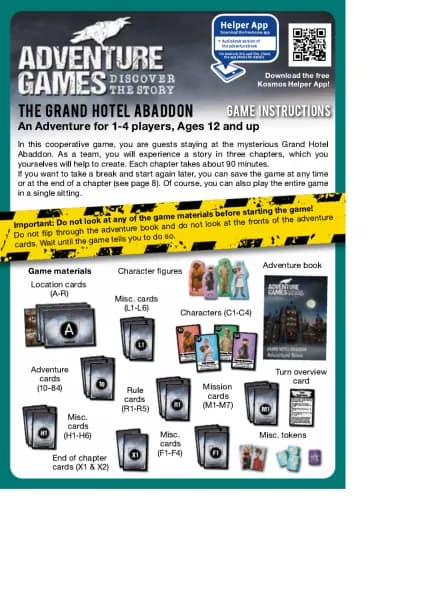Thames & Kosmos Perfume Science handleiding
Handleiding
Je bekijkt pagina 28 van 36

26
IN THE PERFUME LAB —
COMPOSING AND DEVELOPING
Perfumers command the multiple notes
in their “fragrance organ,” which is the
name of the huge collection of fragrant
oils in vials on their shelves. It is called this
because of its resemblance to a pipe organ.
You have probably been to a concert or
some other musical performance. The work
of perfumers can be compared to that
of composers because perfumes are like
melodies that consist of individual notes.
In this case, the notes are fragrances. All
of the fragrances in the kit are already
compositions or melodies. They consist of
carefully selected and mixed fragrance
materials just like notes that form a specific
song.
Just like composers must learn the
individual musical notes before they can
compose beautiful melodies, so must the
perfumers get to know their perfume oils
before composing beautiful perfumes.
Fragrances can be thought of as perfume
building blocks. Next, you will learn how
this is done.
GETTING TO KNOW
YOUR PERFUME OILS
As you know, you have four Basic Perfume
Oils in your perfume laboratory. They are
called Flory, Woody, Lemony, and Musky.
The Basic Perfume Oils are the foundations
for the perfumes that you will compose.
In addition, there are the four Creative
Perfume Oils: Orienta, Mentha, Mella, and
Tropica. They are responsible for the unique
notes of your perfume melody.
> Materials from the kit: all 8 perfume
oils
> Additional materials: pencil, note
paper, smell strips
Experiment
1. Start by getting to know the Basic
Perfume Oils.
2. Prepare four smell strips by writing
the names of these oils below the midpoint
of each strip.
3. Begin your “nose-training” with
Flory. This flowery Basic Perfume Oil is the
starting point for many perfume creations.
Put 1 or 2 drops of Flory on the smell strip
with this name on it.
4. Sniff the smell strip briefly and note
the fragrance. Perhaps you can even
imagine a picture with it. Then sniff it
again with your eyes closed. Memorize the
picture from before.
5. Now put the smell strip into one of
the slots in the kit tray for at least one
minute to give your nose a break.
6. Now repeat step 4. Sniff the smell
strip. Can you recall the fragrance and its
picture? If not, take a short break and test
the smell strip again. This time, you will
surely succeed.
7. Familiarize yourself with the other
perfume oils in the same way. Allow
yourself at least a five-minute break
between each fragrance. This is the
only way that your nose will not be
overwhelmed.
> Important: In the beginning, get to
know the four Basic Perfume Oils and take
a 15-minute break. Then do the same thing
in the reverse order and see if you can
Bekijk gratis de handleiding van Thames & Kosmos Perfume Science, stel vragen en lees de antwoorden op veelvoorkomende problemen, of gebruik onze assistent om sneller informatie in de handleiding te vinden of uitleg te krijgen over specifieke functies.
Productinformatie
| Merk | Thames & Kosmos |
| Model | Perfume Science |
| Categorie | Niet gecategoriseerd |
| Taal | Nederlands |
| Grootte | 9865 MB |







